Abstract
The Beijing Siheyuan is typical and representative of traditional Chinese residential construction. It is not only an architectural form but also a reflection of the traditional modes of living in Beijing. However, with the changes in family structure and people’s living needs, the spatial pattern of traditional courtyards has been unable to meet the life and economic needs of modern society. The scarce public space, poor living environment, and the low-quality of residents’ life led Siheyuan to lose its original status. Despite these challenges, whether for the protection of the overall style of Beijing’s old city or the renewal of modern urban functions, the Siheyuan is crucial.
Based on the theory of this unique typology, this thesis summarizes Beijing Siheyuan’s current challenges and development opportunities by combing through the historical development process of Siheyuan in the Baita Temple area of Beijing for alternative forms of transformation. Through the study of domestic Siheyuan transformation cases, and the latest protection strategies in the area, as well as direct surveys with residents on the current situation of Beijing's Baita Temple area, a balanced view of Beijing's important courtyard cluster area, is obtained. On this basis, this thesis summarized the building modules of Beijing Siheyuan, and through organic integration, put forward effective suggestions for the protection and renewal of the Beijing Baita Temple area.
The spatial sequence of courtyards is reconsidered considering two priorities: the public and private needs of the courtyard space and the interaction with the community environment. The motifs of the public space and residential unit are extracted from the traditional courtyard structure, and the traditional two-layer courtyard is taken as an example to expand and upgrade public space, reorganize and interpret the residential units. Combining the logic of the traditional Chinese construction system, the original architectural sequence that is no longer suitable for modern lifestyles has been optimized and transformed.
The design is based on the user's point of view, revolving around the concept of “Simultaneity”, giving residents a sense of belonging. Meanwhile, without affecting the traditional appearance and form of the courtyard, this design bases on the people-oriented purpose, injects the functional logic into modern life, making the residents have a more authentic life experience.
Programs in Traditional Siheyuan
Traditional Siheyuan in Beijing has its own architectural forms. Although there are many types of siheyuan, each type of siheyuan is composed of a very basic layout. The most standard traditional Siheyuan is composed of opposite houses, courtyard, side houses, main houses, and backside houses. The rooms are connected in series through the pathways. The houses and courtyards are arranged symmetrically along the north-south longitudinal axis. The main gate of the residences is mostly located on the south.
Image
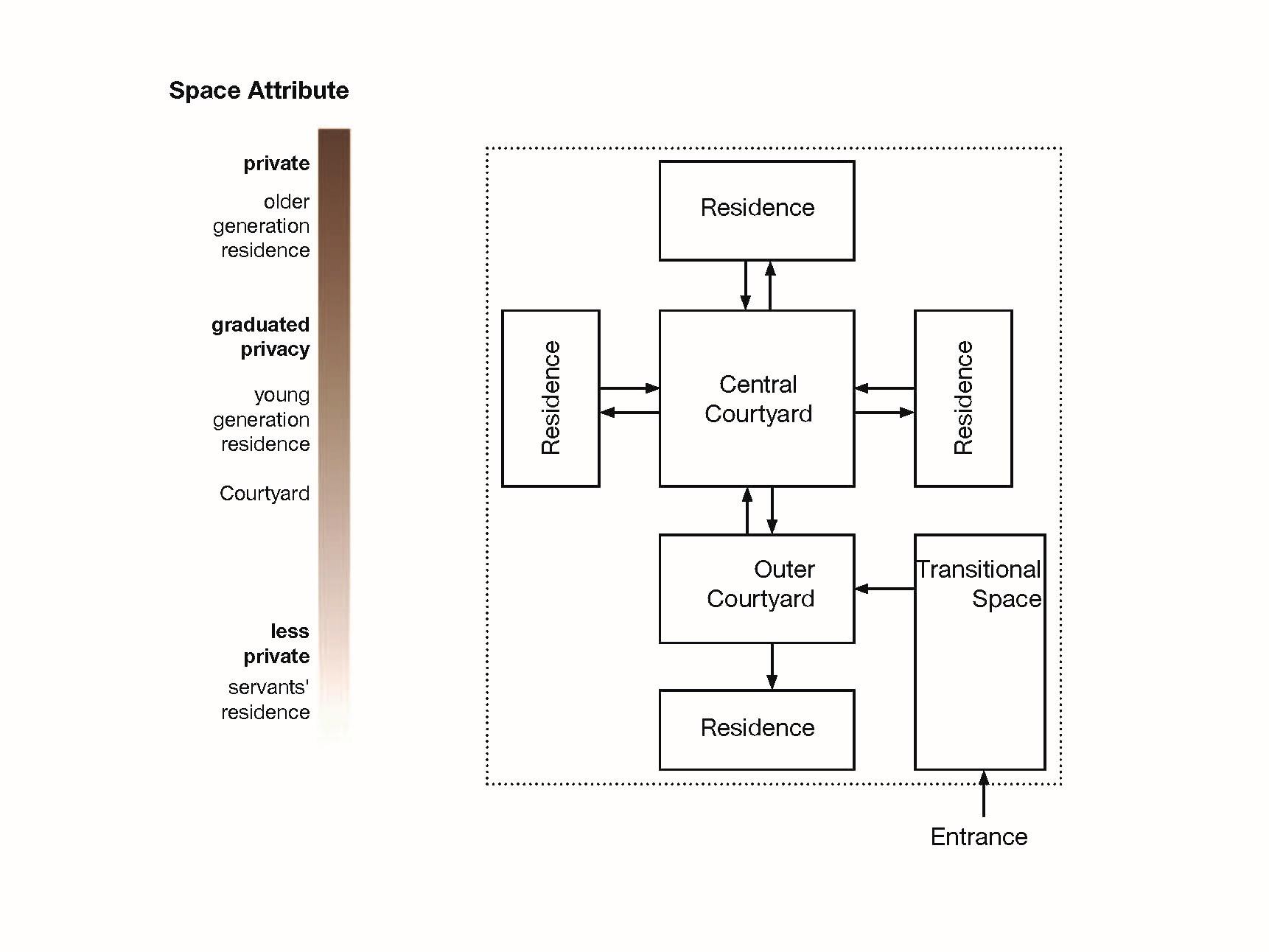
▲ The basic layout of traditional Siheyuan
Current Situation & Problems
Image
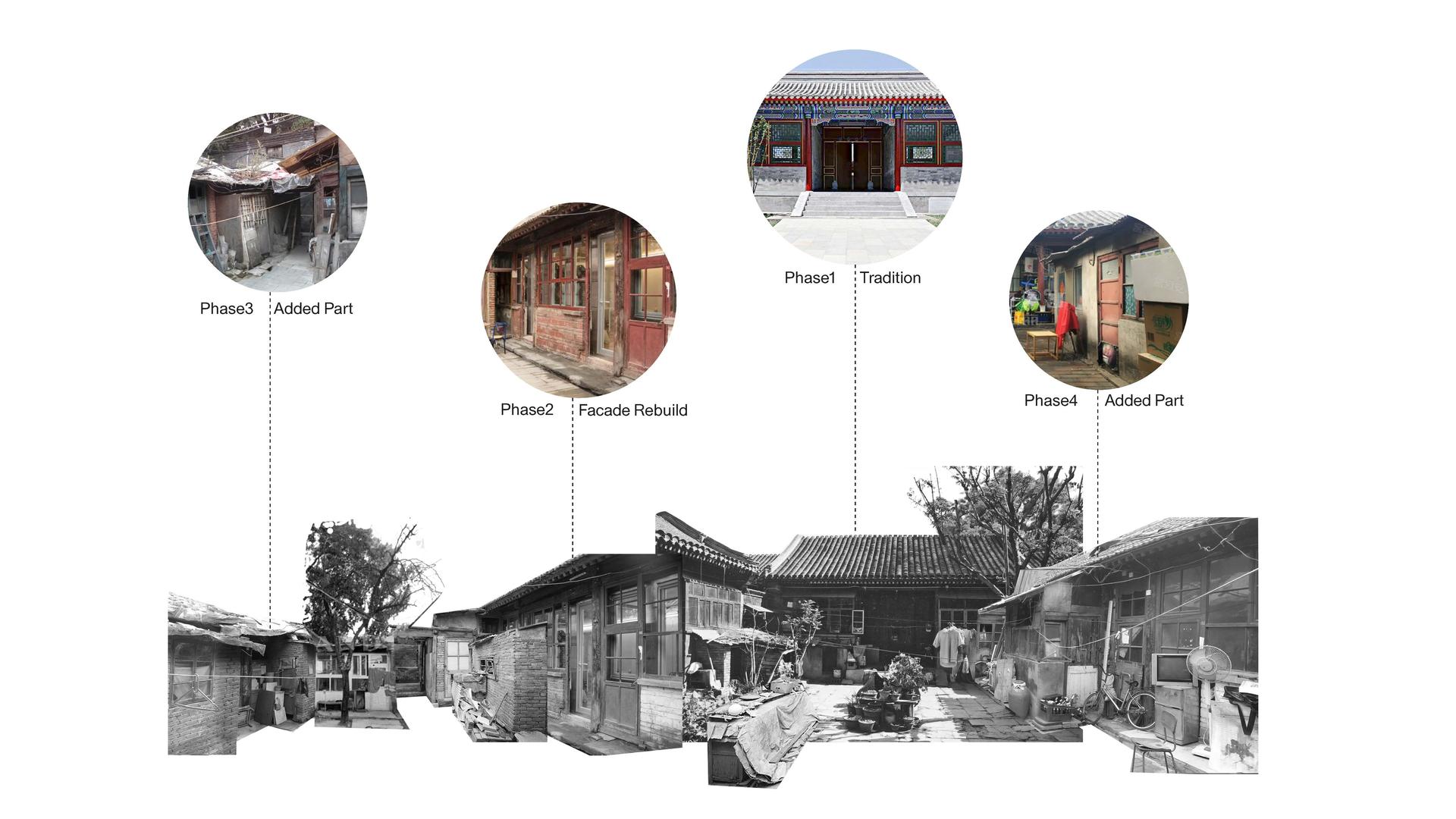
▲ Host Site Collage
In ancient times, a siheyuan would be occupied by a single, usually large and extended family, signifying wealth, and authority. Today, due to political, social, natural, and other reasons, siheyuan are often still used as subdivided housing complexes, the spatial pattern of traditional courtyards has been unable to meet the life and needs of modern society. The scarce public space, poor living environment, and the low-quality of residents’ life led Siheyuan to lose their original status. Despite these challenges, whether for the protection of the overall style of Beijing’s old city or the renewal of modern urban functions, the Siheyuan is crucial.
Site
Location: No.11, Gongmenkou 5th, Xicheng District, Beijing, China
Image

Distribution of The Surrounding Siheyuan
Image
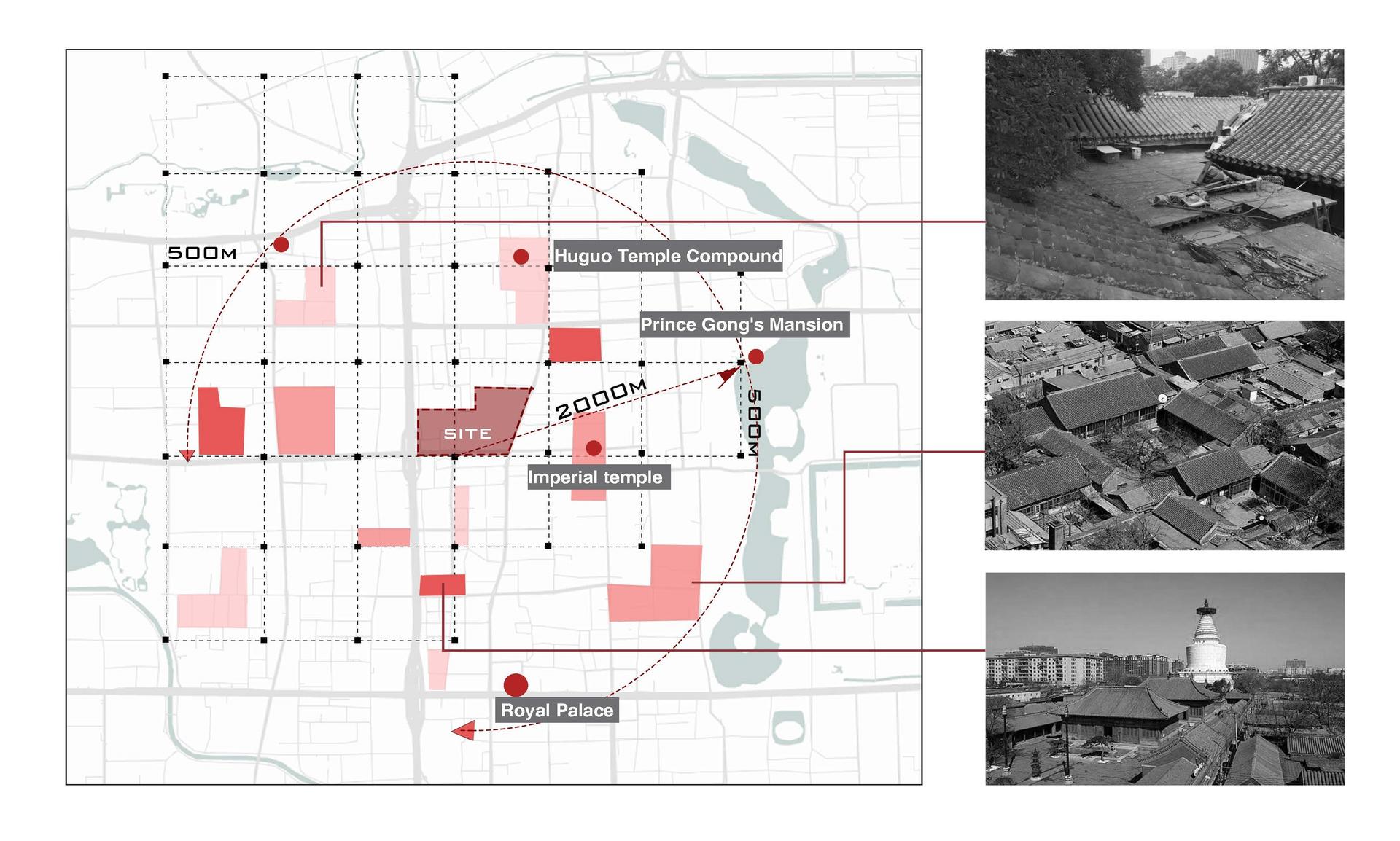
Distribution of The Surrounding Typology
Image
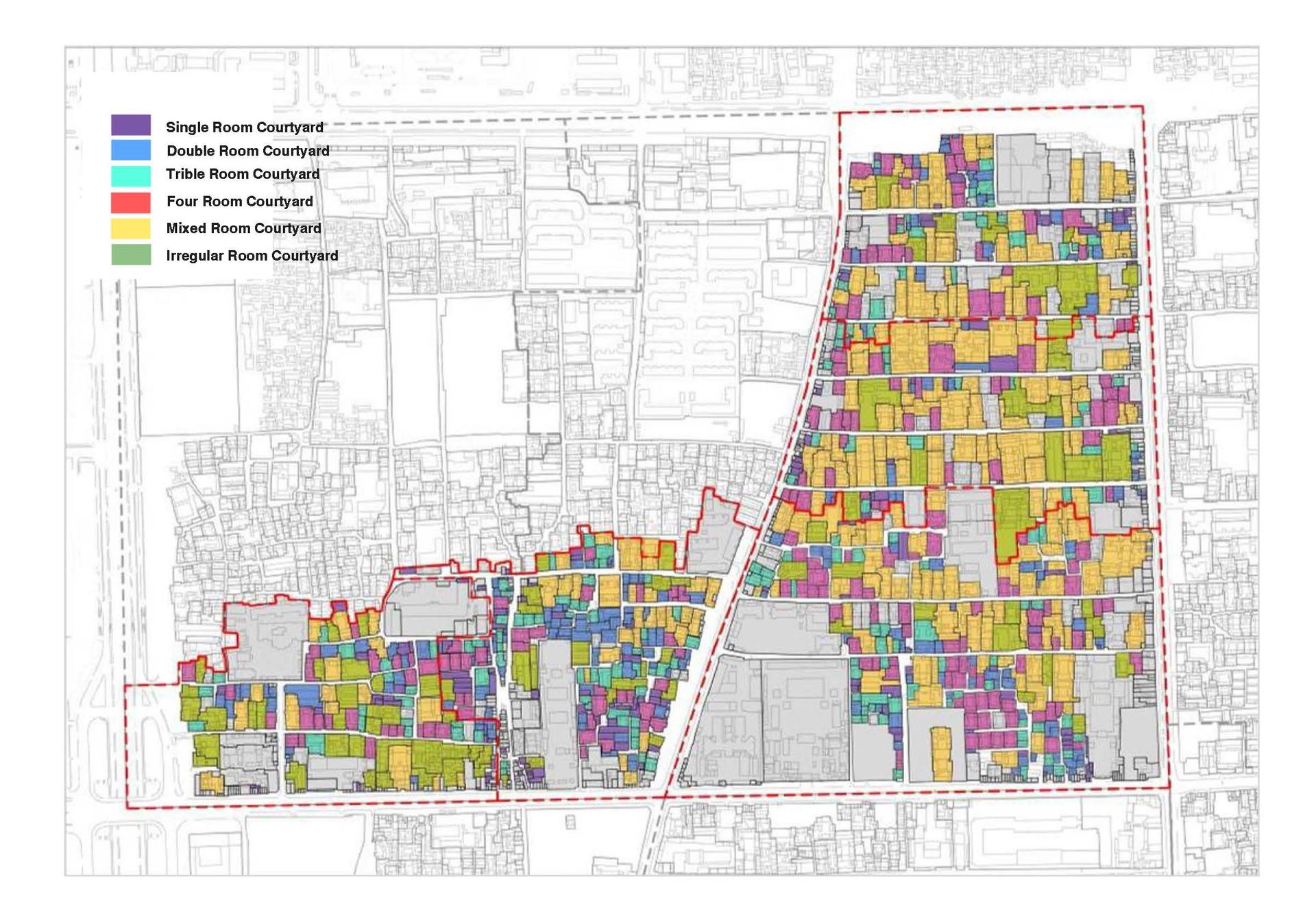
Residence Types
Image
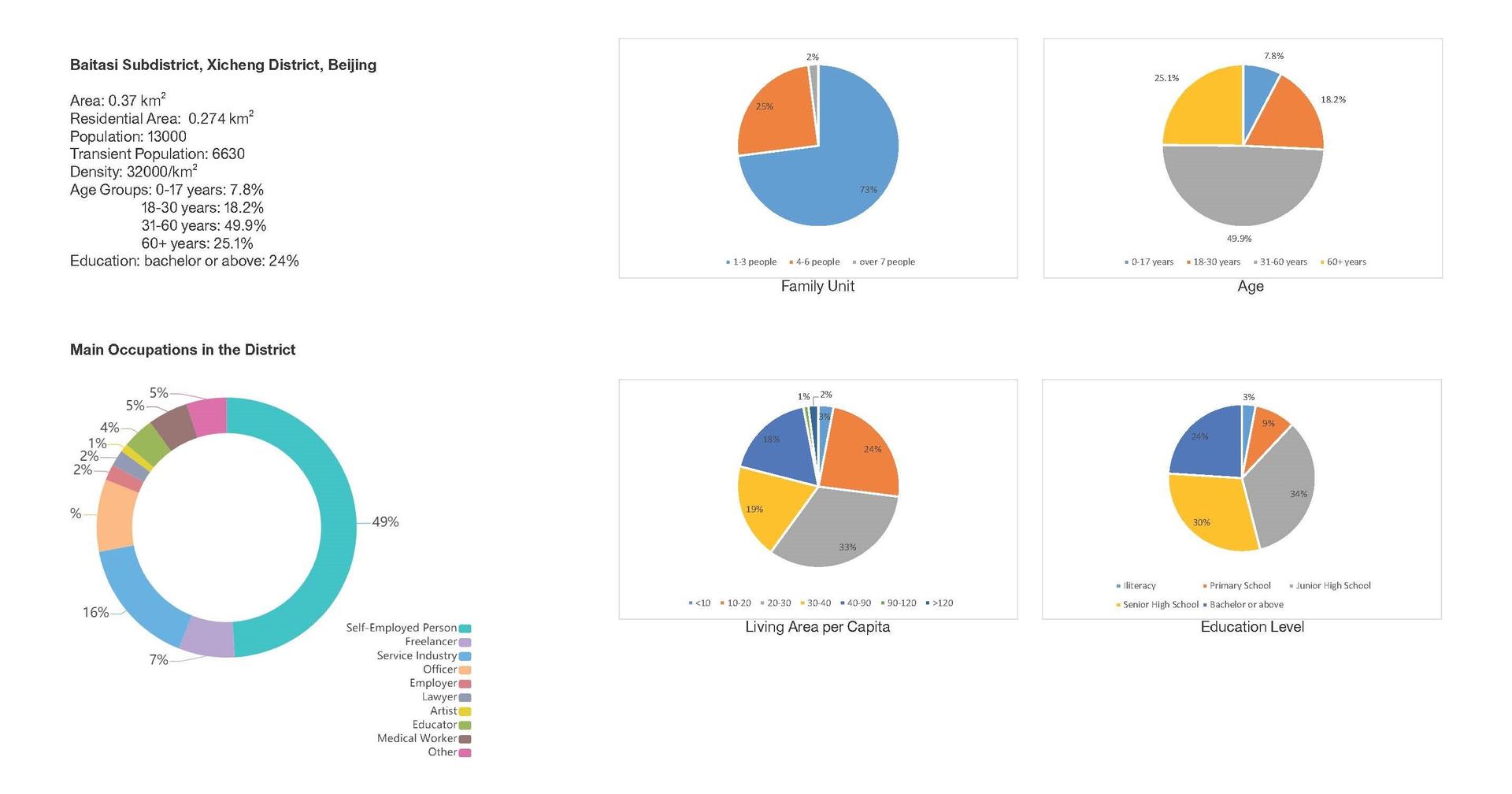
Building Development
Image
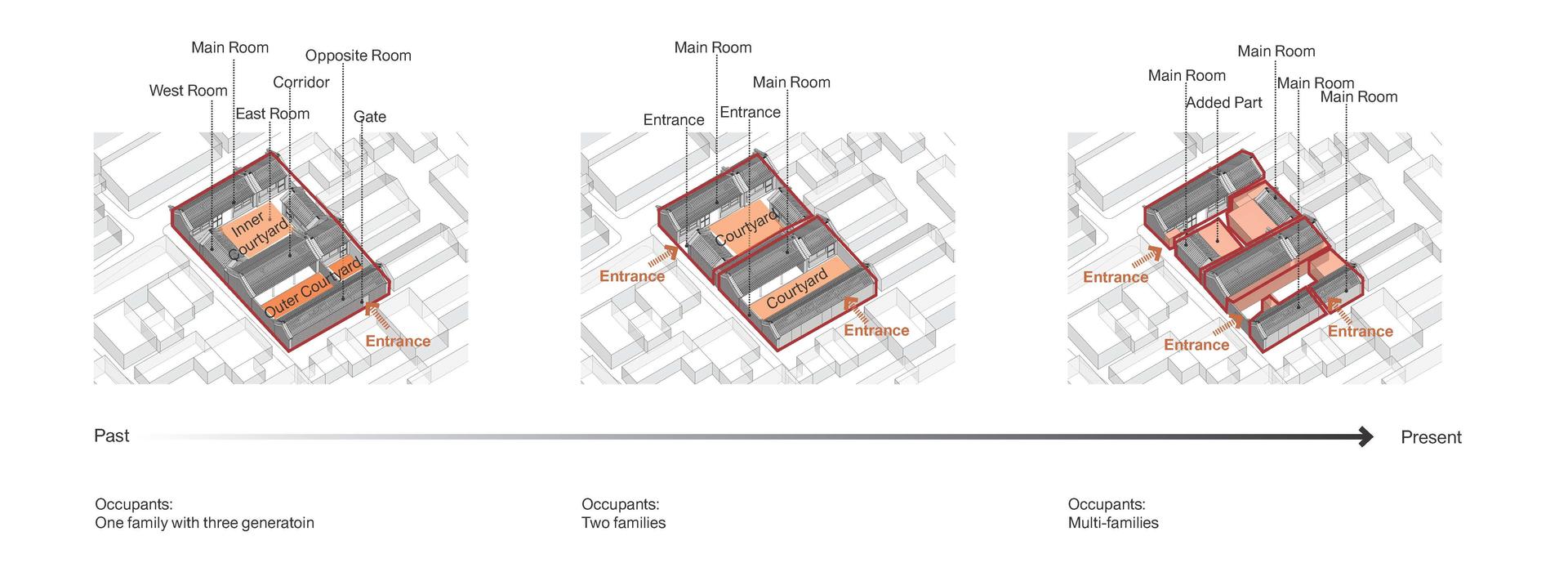
Design Strategies
Old & New
Image
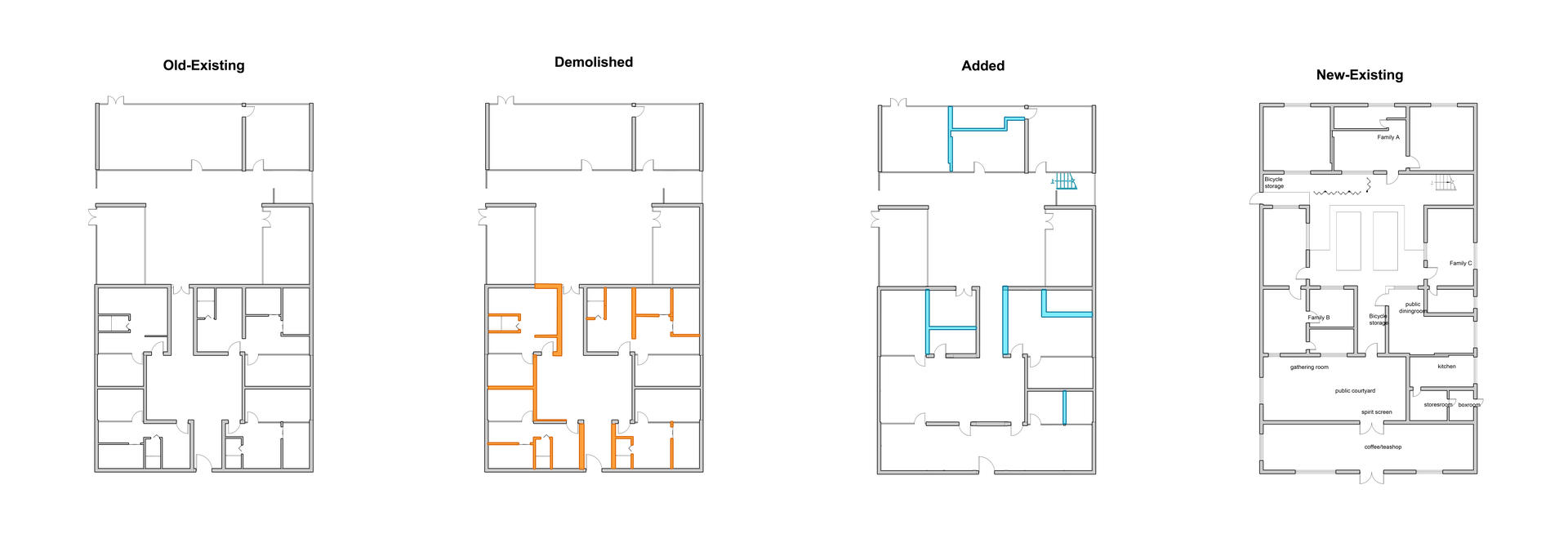
Floor Plan
Image
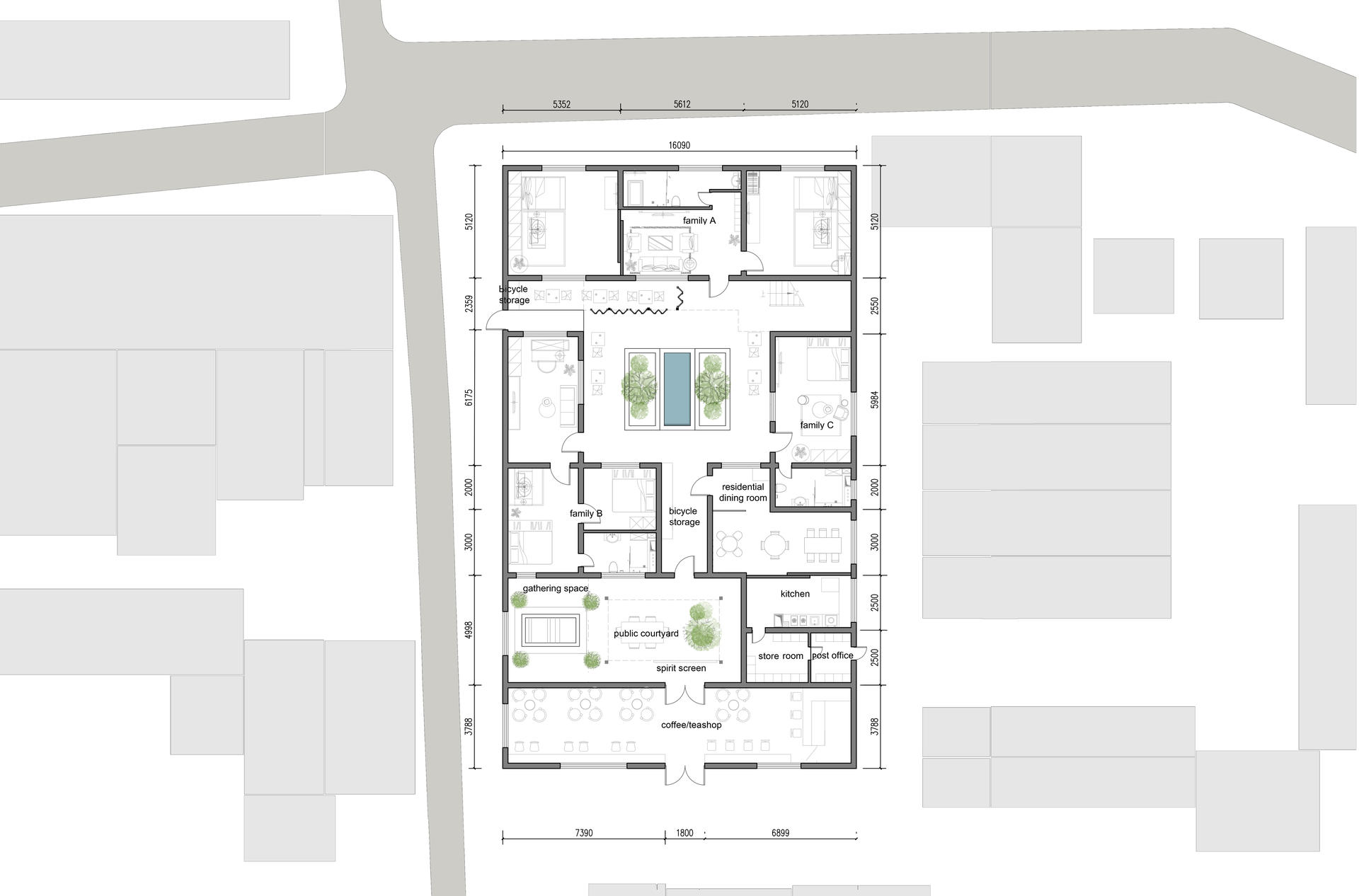
Unit Modules
Image
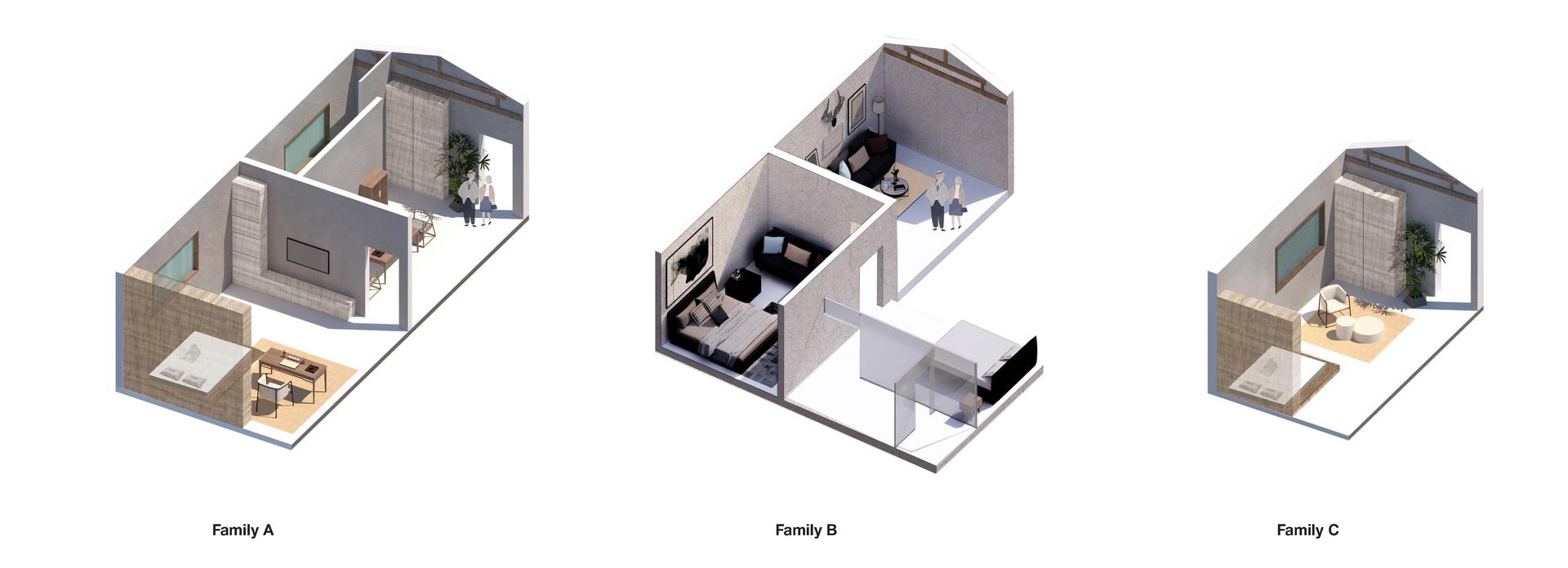
Section A-A
Image
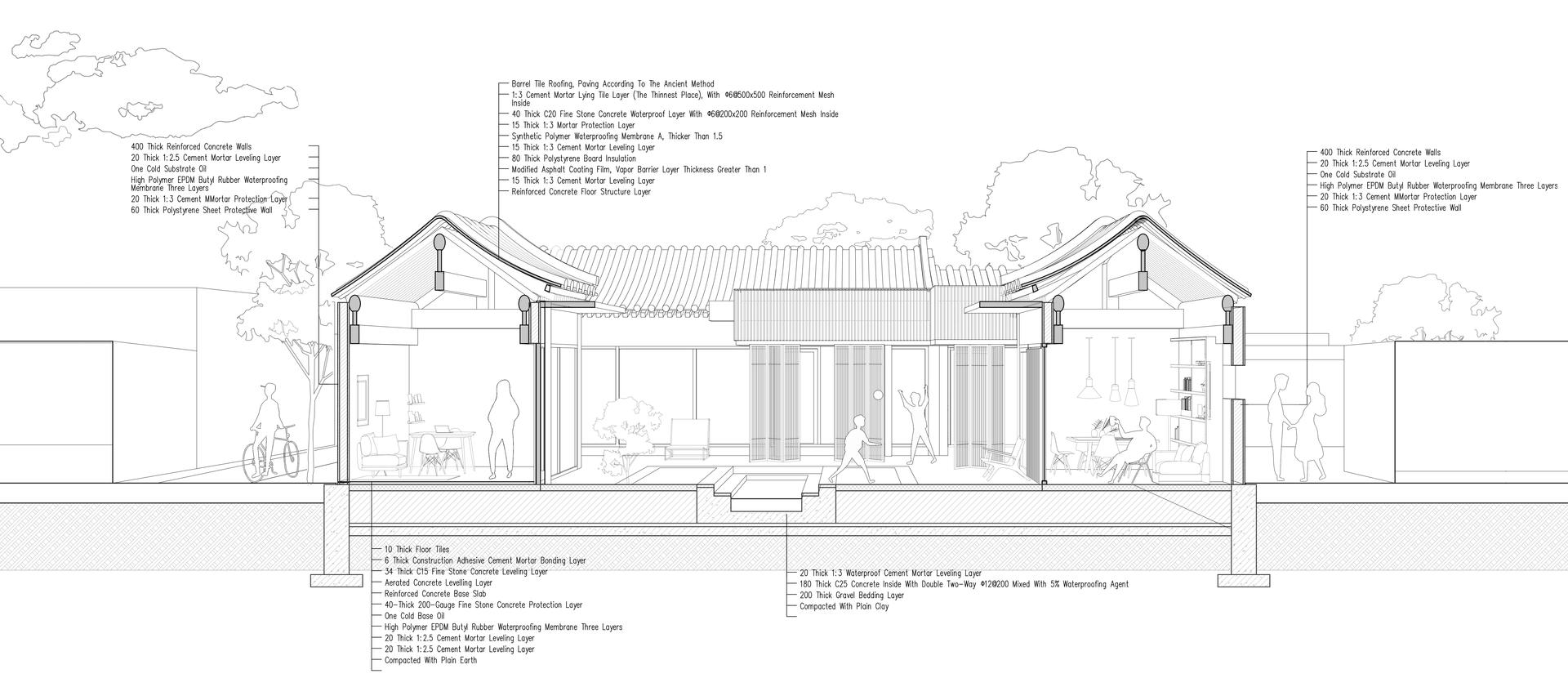
Section B-B
Image

Southwest Alley Perspective
Image
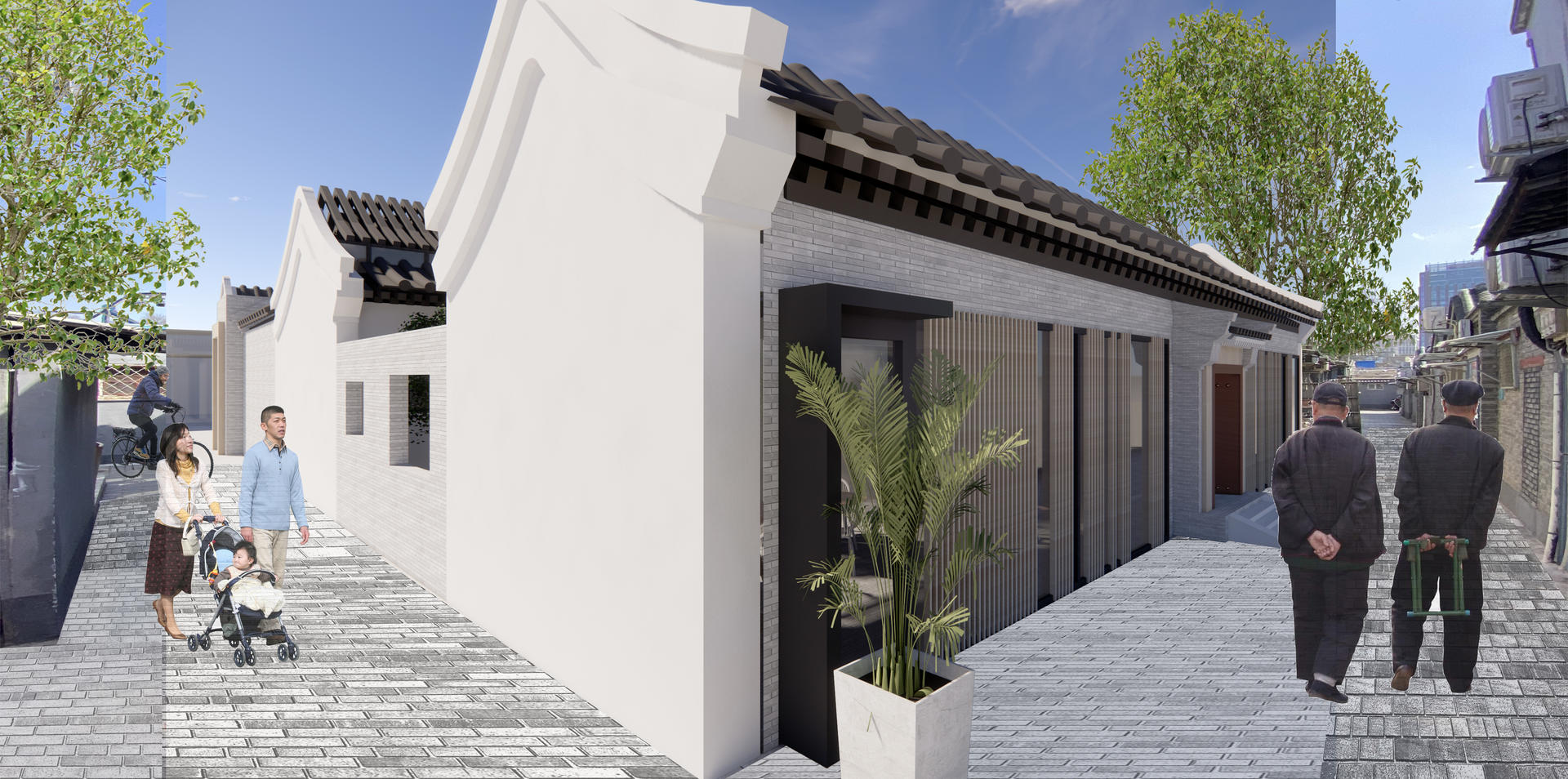
East Alley Perspective
Image
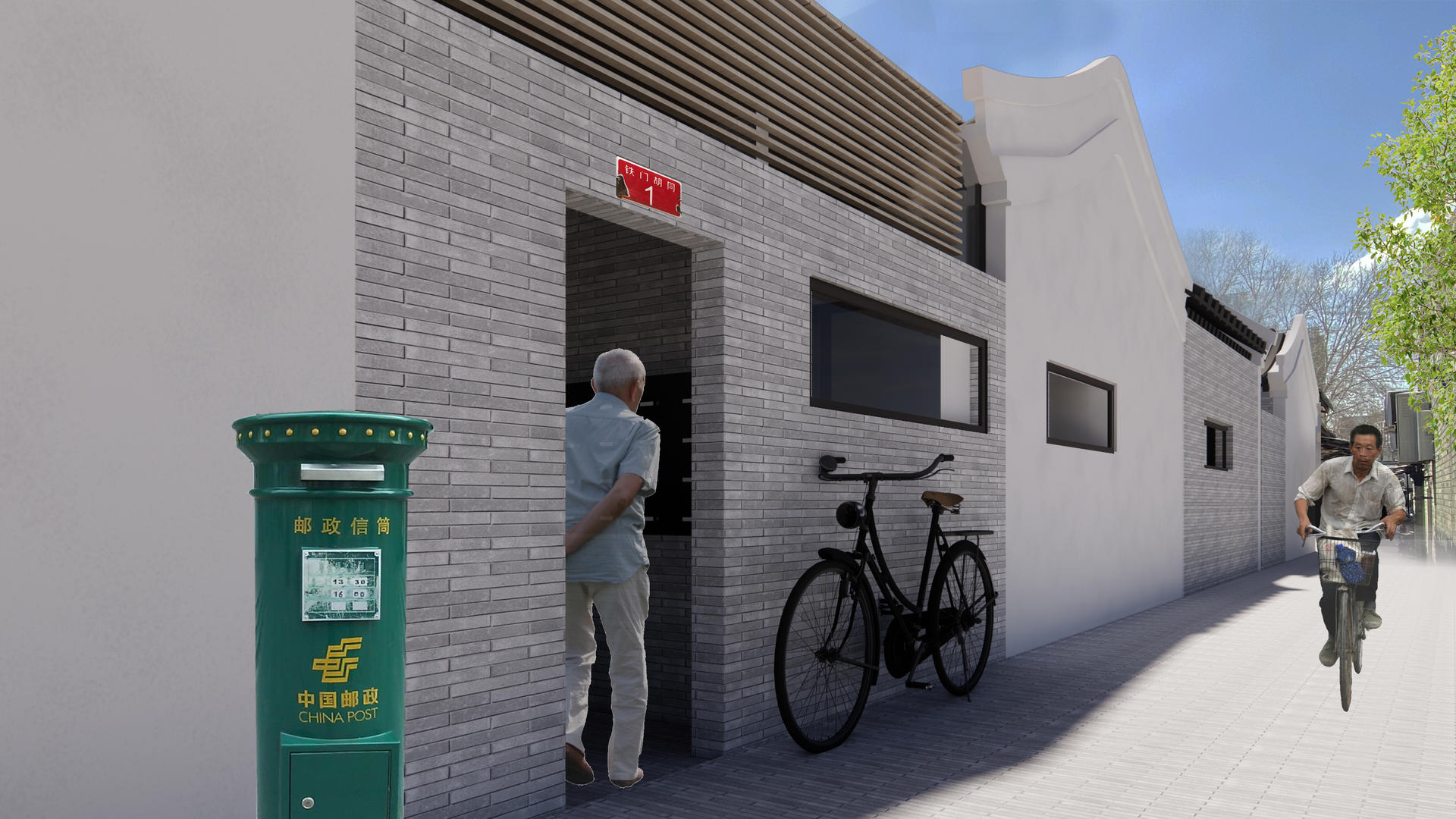
Private Courtyard Perspective
Image
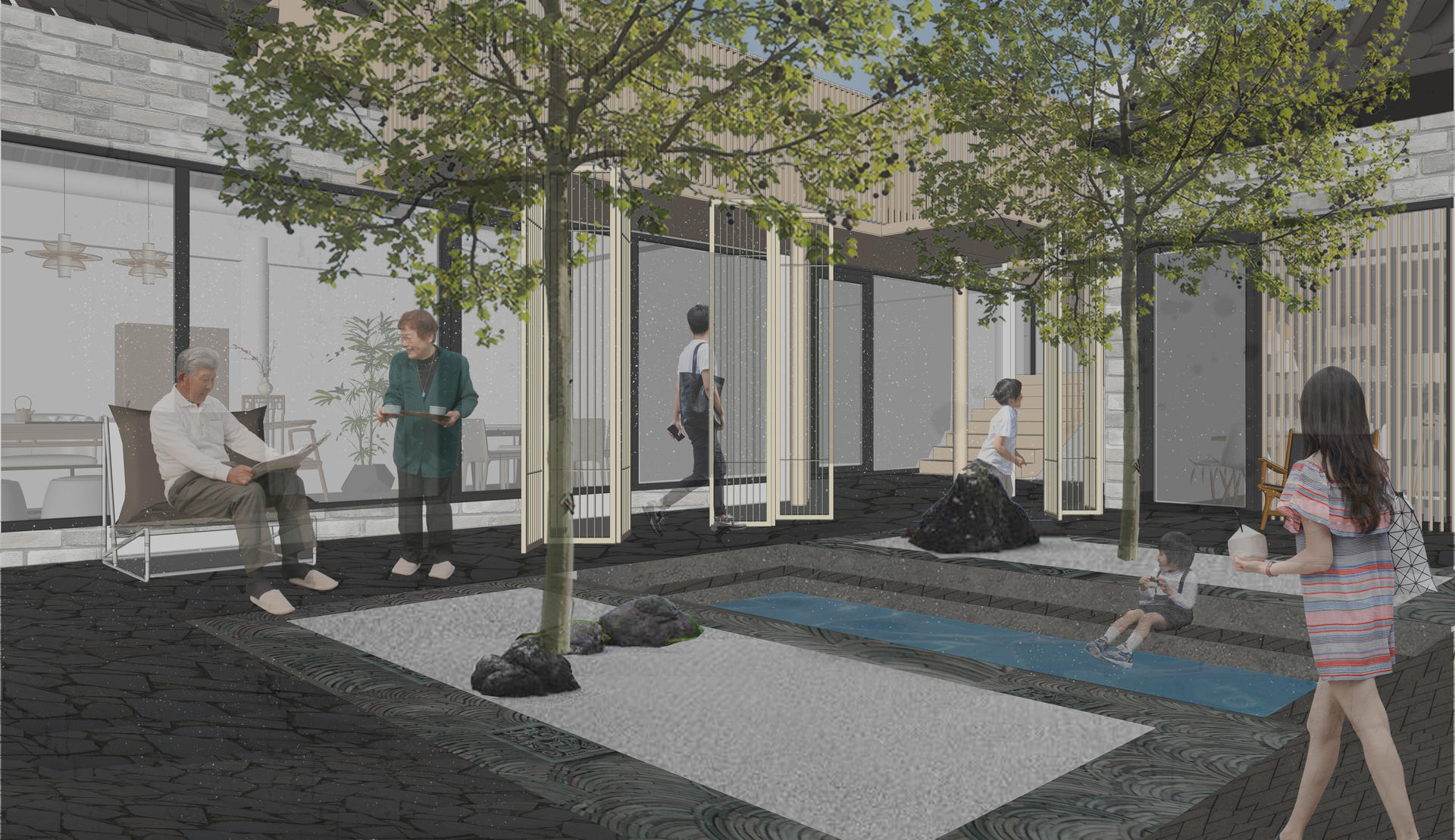
Public Courtyard Perspective
Image
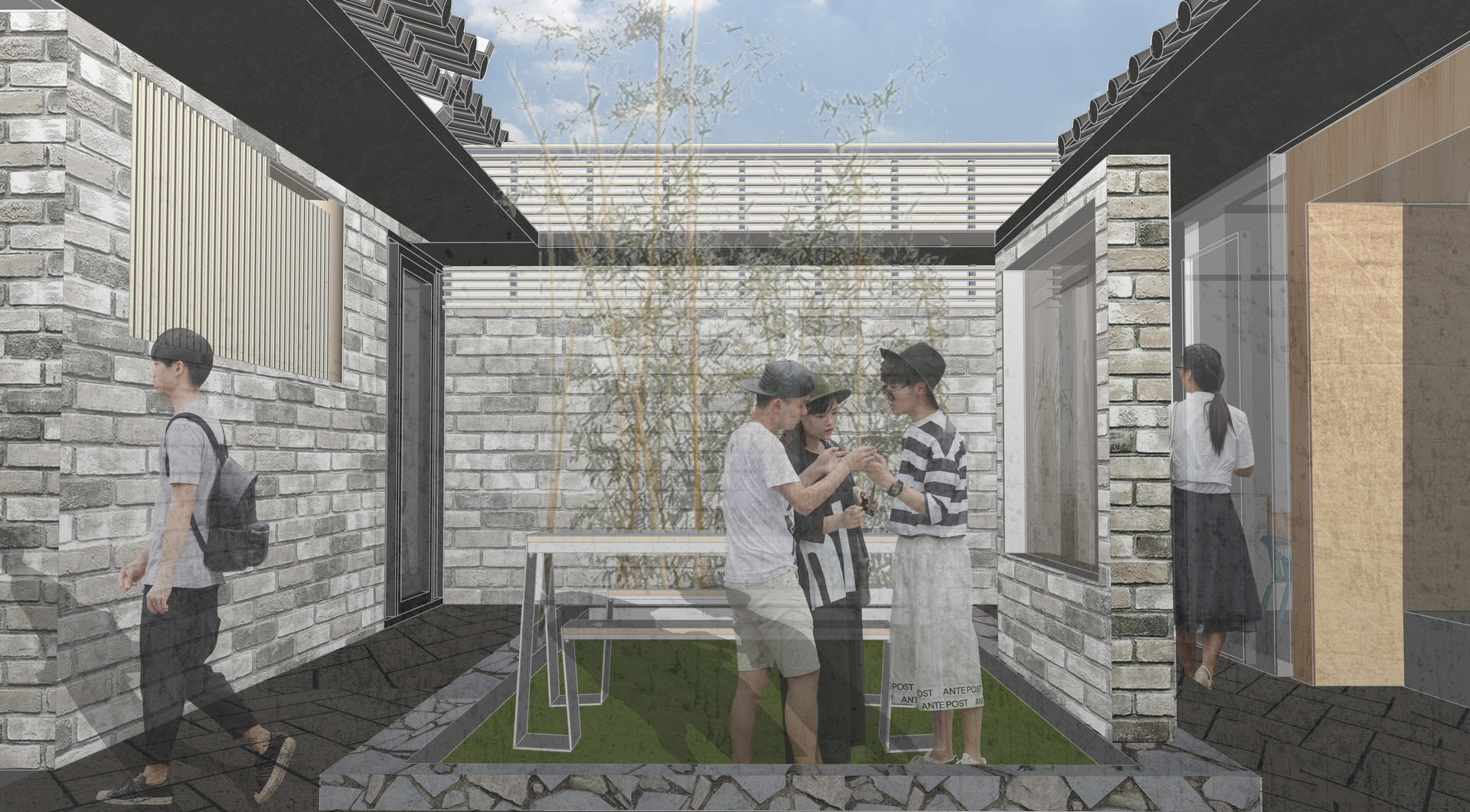
Private Courtyard Perspective
Image
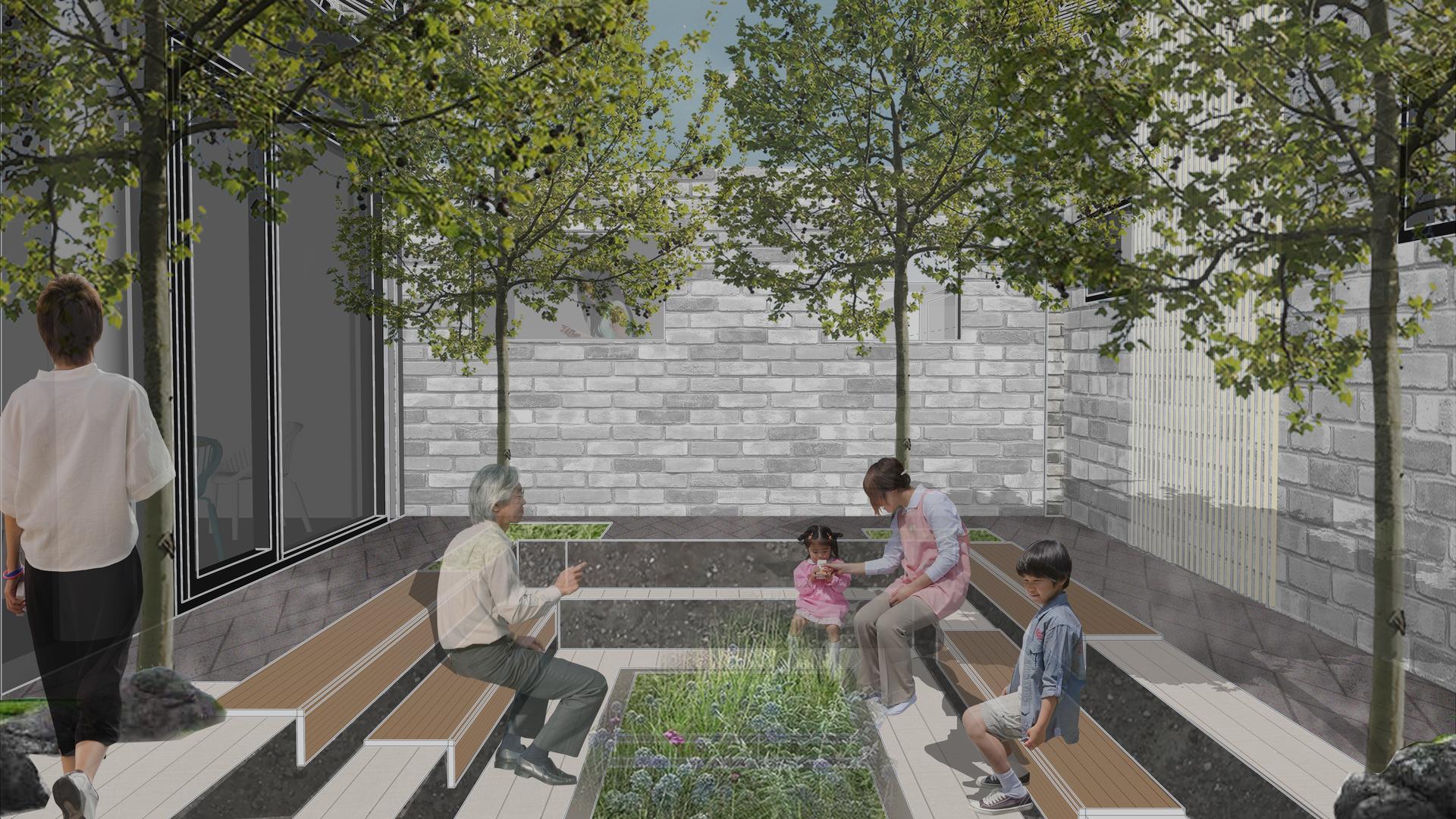
Exploded Axonometric View
Image
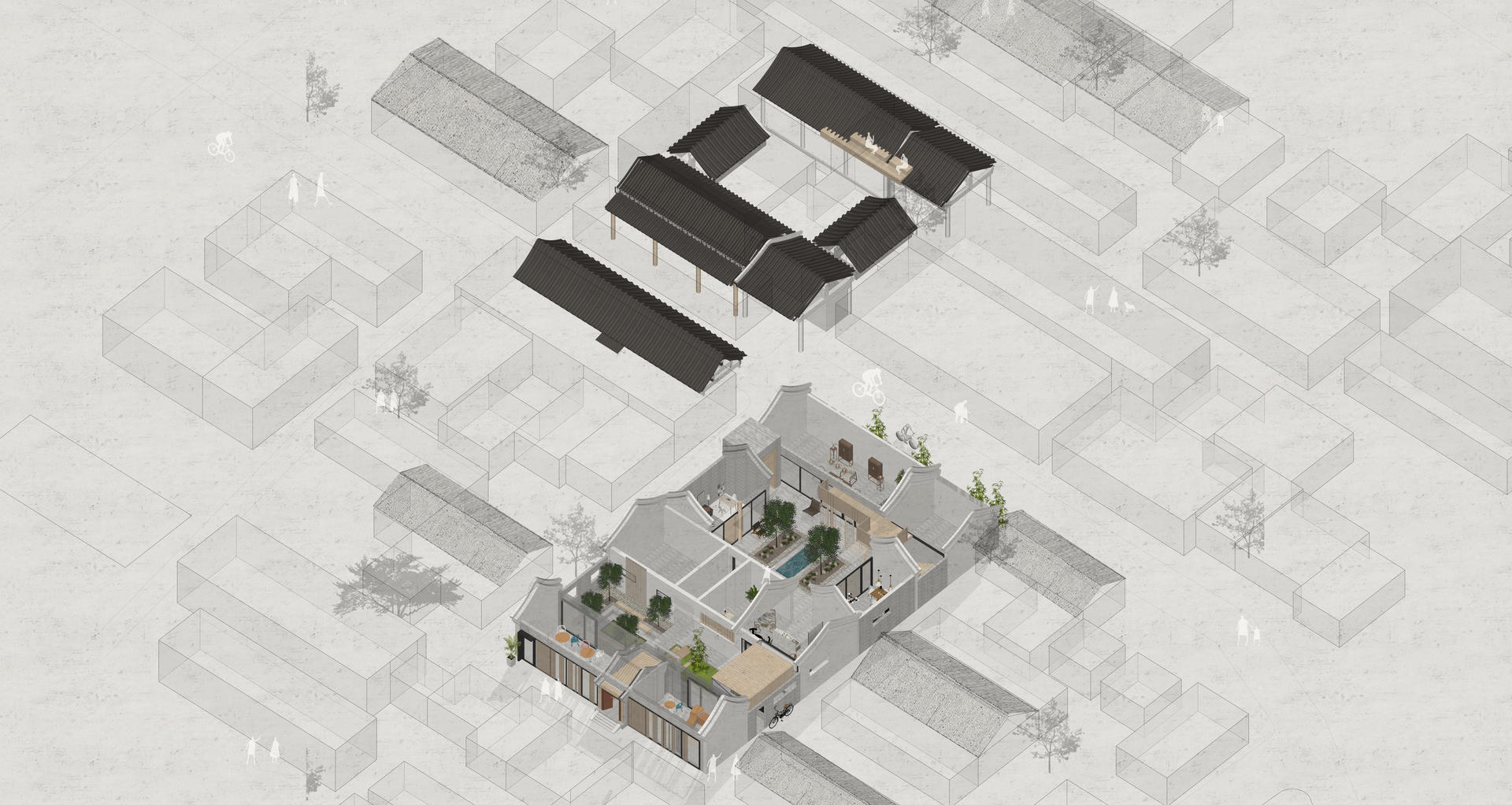
ANNONTATED BIBILOGRAPHY
- Jia, Jun. 北京四合院 Beijing Siheyuan. Tsinghua University Press, 2009
- Liu, Dunzhen. 中国古代建筑史 History of Ancient Chinese Architecture. China Architecture & Building Press, 1984.
- Shi, Weiliang, Du Liqun, and Ma Liangwei. 北京旧城胡同实录 Record of Hutong in Beijing Old City. China Architecture & Building Press, 2008.
- Ye, Zurun. 北京民居 Beijing Civilian Residential Housing. China Architecture & Building Press, 2009.
- Shi, Weiliang, Du Liqun, and Ma Liangwei. 北京旧城胡同实录 Record of Hutong in Beijing Old City. China Architecture & Building Press, 2008.
- Zhuang, Dianlun. 元代北京四合院住宅探析 Analysis of Beijing Courtyard Houses in Yuan Dynasty. Beijing University of Architecture and Architecture, 2013.
